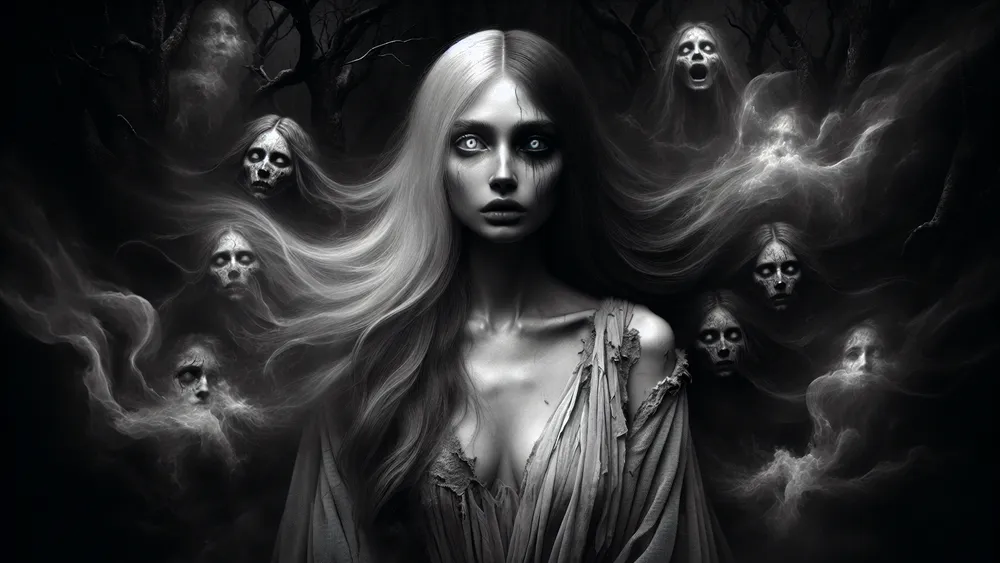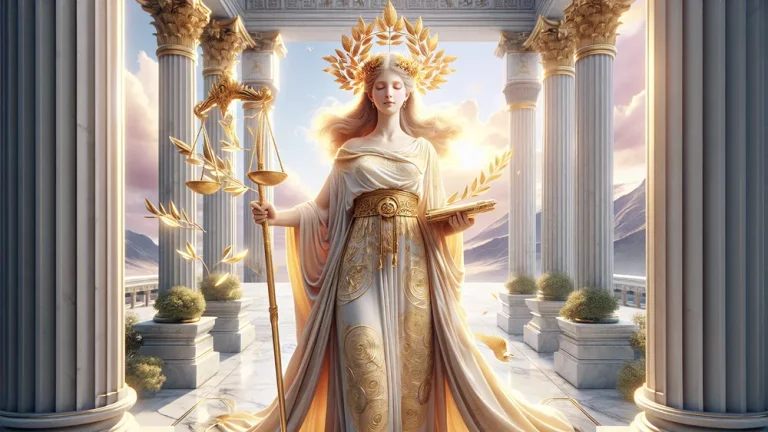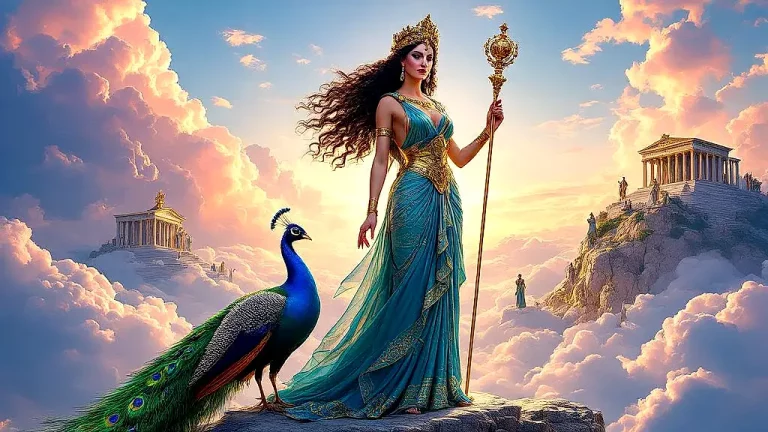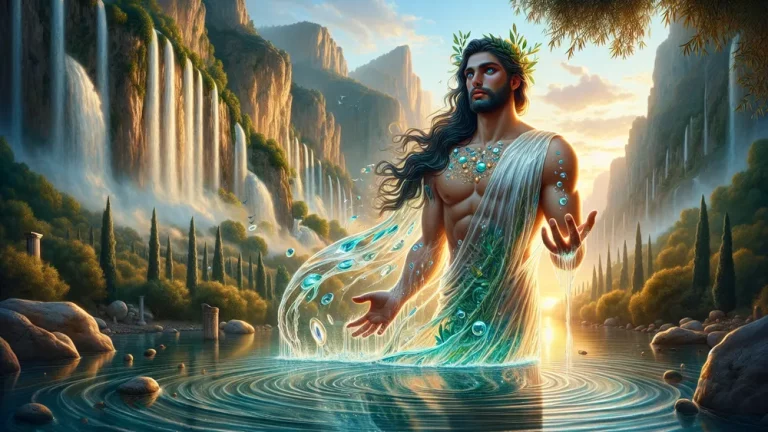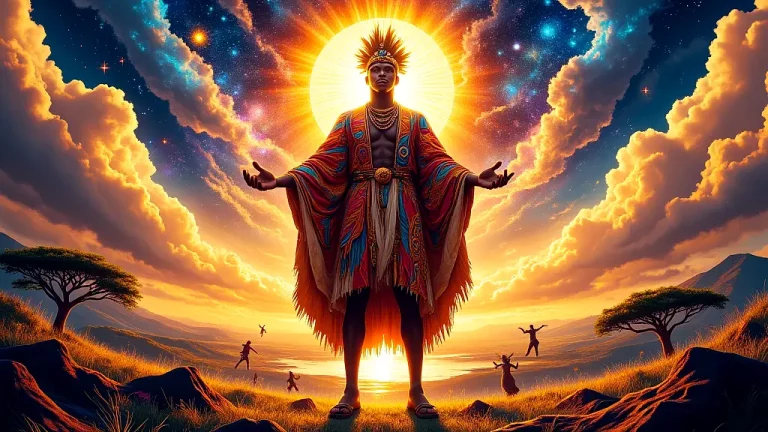Melinoe: Goddess Of Nightmares And Ghosts
Here’s the interesting world of Greek mythology, in which gods, goddesses, and mythical beings make rich stories. Today, and we look into the figure of Melinoe, the goddess that is of nightmares and ghosts. Think of a god who handles the spooky area of our darkest dreams and the spirits up and about at night.
Key Points:
- Melinoe is the Greek goddess of nightmares and ghosts.
- She is the daughter of Persephone and Hades, sometimes Zeus.
- Melinoe is shown as a young woman with a pale, dual-colored face.
- Her symbols include torches, ghostly figures, and a dark cloak.
- People worshipped her in small groups and at night in places linked to the underworld.
- Melinoe sends scary dreams and guides spirits in the afterlife.
- She interacts with other gods like Hades, Persephone, and Hecate.
Just like horror films and ghost stories now get our interest, the ancient Greeks hadMelinoe. She was to be their symbol those creepy parts of their world. We’ll look at where she comes from, how she looks, her symbols, and where she fits in the Greek gods group. We’ll also see how people worshipped her and the tales that talk about her, and this gives a comprehensive understanding of this goddess.
Next, we go into the dark areas of Greek mythology and find out more about Melinoe.
H2:Melinoe: Overview and Key Facts
| Key Point | Description |
|---|---|
| Name | Melinoe |
| Area | Goddess of Nightmares and Ghosts |
| Parents | Parents are Persephone and Hades; sometimes, Zeus is called her dad. |
| Symbols | Torches, ghost shapes, dark cloak |
| Looks | Shown as a young woman with a pale face, sometimes half-black and half-white. This shows her two sides. |
| Importance | Stands for the fear and mystery linked to night and afterlife. |
| Worship | Though little proof exists of worship, likely praised in personal rituals and small shrines. |
| Famous Stories | Talks about walking around at night with many ghosts, making people scared and have bad dreams. |
| Related Gods | Includes Hades, Persephone, and Hecate who deals with witchcraft and ghosts. |
| Cultural Effect | Affects today’s views of ghosts and nightmares in books and media. |
Where She Came From and How She Was Born
To know about Melinoe’s beginnings and the myths around her birth, it’s important to look at her interesting family and the early stories with her in them.
Her Family Tree
Melinoe’s family is both interesting and major, with roots deep in the underworld. Her parents are Persephone, the queen of the underworld and goddess of spring, and Hades, the god of the underworld. In some stories, Zeus is called her dad, making it more complex. This unique parentage fills Melinoe with a dual nature, showing both life and death. To understand her better, think about how today’s families shape their kids’ identities through roles and places. The same way, Melinoe’s control over nightmares and ghosts comes straight from her parents. Here are the key people in her family:
- Persephone: Queen of the underworld, goddess of spring, a sign of new life.
- Hades: God of the underworld, ruler of the dead, very powerful and mysterious.
- Zeus (in some tales): King of the gods, symbol of power and sky.
This family history not only explains her abilities but also her place in Greek mythology.
Melinoe’s unique parentage from Persephone, Hades, and sometimes Zeus gives her a dual nature, reflecting both life and death, and explains her role in Greek mythology.
Her Birth and Early Myths
The stories about Melinoe’s birth are as puzzled as the goddess herself. Some legends say she was born to Persephone and Hades, which makes her a child of the rulers of the underworld. Other myths, however, say that Zeus is her dad, making it more complex and interesting.
These accounts show the mysterious nature of her roots, like modern stories that make us wonder about a character’s real background. Early myths show Melinoe walking the earth at night with ghosts, making people afraid and giving them bad dreams. These stories show her role connecting the living and the dead, showing her power over what is unseen and unknown. Here are key points about her birth and early myths:
- Parentage: Different myths say she is either the child of Persephone and Hades or Persephone and Zeus.
- Walking the Earth: Early tales speak of her night walks with ghosts, spreading fear and bad dreams.
- Role in Myths: She links the living and dead, showing the scary and mysterious parts of the afterlife.
These stories set up her later images and show her importance in Greek myths.

What She Looks Like and Represents
To really understand Melinoe’s essence, it is important to look at how she is shown in pictures and writing, also the things that stand for her.
How She’s Usually Seen
Art and writing often show Melinoe as a ghost-like figure, showing the scary and mysterious sides of the underworld. Often is she shown with a pale, ghost-like complexion. This look shows her connection to the dead. One of her unique traits is her dual-colored body with one side dark and the other light, showing she is both life and death. Ghosts often joined her, showing she rules over the dead. Here are some key traits and symbols for her:

- Pale, Ghostly Complexion: This look shows her link to the dead.
- Dual-Colored Body: Shows she is about both life and death.
- Accompanied by Ghosts: Shows her role as the leader of spirits.
These traits show her scary and mysterious sides and her role among the Greek gods.
What Her Symbols Mean
Linked to several symbols, Melinoe shows her special traits and skills. Each has meaning to help get her role in Greek mythology. Like, her dual-colored body shows she is both life and death. Her pale face shows she’s linked to the dead. Ghosts also follow her, showing she rules over spirits. Here is a table showing these symbols and what they mean:
| Symbol | Meaning and Significance |
|---|---|
| Dual-Colored Body | Shows she is both life and death. |
| Pale, Ghostly Complexion | Means she’s linked to the dead. |
| Retinue of Ghosts | Shows her role as leader of spirits. |
And these symbols show her scary and strange nature and make clear her role among Greek gods.

What She Does
By knowing Melinoe’s symbols and look, we get ready to find out her roles and actions in the stories of Greek myths.
Her Role with Nightmares and Ghosts
Being the goddess of nightmares and ghosts means she’s in a special spot in Greek mythology. People thought she could send scary dreams as punishment or warning. These dreams weren’t random. They were seen as messages from gods. These scary dreams were thought to be sent by Melinoe. And this power over dreams shows she is linked to scary parts of the mind and the supernatural.
In the afterlife, she also leads ghosts, guiding spirits through the underworld. This role shows she has power over dead ones and can cross between living and dead. Many stories say she works with other gods, like Hades and Persephone, to keep things balanced in the afterlife. Here are some important parts of what she does:
- Sends Scary Dreams: Sends messages with scary dreams.
- Leads Ghosts: Guides and controls spirits in the underworld.
- Works with Other Gods: Helps other gods to keep balance in afterlife.
These roles show she is scary but important in Greek myths.
Melinoe, the goddess of nightmares and ghosts, sends frightening dreams as messages, leads spirits in the underworld, and collaborates with other gods to maintain balance in the afterlife.
How People Worshipped Her
With us looking at Melinoe’s roles and effect, it’s important now to know how people from ancient Greece honored her.
Signs People Worshipped Her
Evidence that people worshipped Melinoe is quite rare, but there are signs of her being honored in parts of ancient Greece. Writings hint at small groups that honored her, especially in places linked to the underworld like caves or burial sites. People offered and sacrificed at night, which shows how they connected her with darkness and supernatural things. People often made offerings at night like food or small animals to gain favor or protect against bad dreams. Here are some key points:
- Small Groups and Writings: Signs of groups and writings showing devotion to her.
- Night Offerings: Rituals done at night, involving offerings and sacrifices.
- Worship Locations: Often in places linked to the underworld, like caves and burial sites.
These acts show both respect and fear for Melinoe and highlight her important but mysterious part in Greek religion.
Where People Went to Worship Her
Without big temples only for Melinoe, some sacred places and natural spots were linked to her worship. These places included caves, burial grounds, and other spots tied to the underworld. For example, caves seemed like doorways to the dead realm, good for rituals honoring a goddess of ghosts and bad dreams. Ancient people went into dark caves, thinking they were paths to the world of the dead, where they could connect with Melinoe. The meaning of these places is in their link to the supernatural and the afterlife, which shows Melinoe’s role as a bridge between life and death. Here are some key places tied to her worship:
- Caves: Seen as doorways to the underworld, good for rituals.
- Burial grounds: Grounds where people made offerings to Melinoe.
- Isolated Natural Spots: Remote places that bring to mind mystery and fear of the supernatural.
These places were not just physical but also symbols of the realms Melinoe controlled, making them key to the acts and beliefs around her worship.
Stories and Legends
Since we looked at how people worshippedMelinoe, now we look at the interesting stories and legends about this mysterious goddess.
Big Stories About Her
One of the most important myths about Melinoe is her birth and the events around it. In some stories, she was born when Zeus, looking like Hades, was with Persephone. This trick made her linked to both the underworld and the heavens, showing a dual nature because she is the goddess of nightmares and ghosts.
In this myth, Melinoe is described walking on earth at night with many ghosts, making people afraid. She looked both light and dark, showing her complex origins and dual nature.
Another big story is about Melinoe’s interactions with people and other gods. In one story, she could make people crazy with scary visions and nightmares. This role shows her power over the human mind. Her control of dreams made her a powerful figure in Greek myths, often showing up in stories where people face deep fear or madness. For example, in some stories, heroes or regular people who anger the gods get haunted by Melinoe’s scary visions as a punishment. Here are some key points of her myths:
- Born from Trickery: When Zeus, disguised as Hades, was with Persephone.
- Wanders at Night: Walks the earth with ghosts, causing fear.
- Control of Dreams: Can make people go mad with nightmares and scary visions.
These stories show Melinoe’s special place in Greek myths, where she connects the living with the dead, and the real with the imagined, showing ancient fears and mysteries.
Her Relationships with Other Gods
Melinoe’s dealings with other gods in Greek stories are as complex as her own nature. She is the daughter of Persephone and maybe Hades or Zeus, connecting her to rulers of the underworld and heavens. Her link to Hades matters because she shares control over the dead and the afterlife.
In some stories, she works with Hecate, the goddess of witchcraft and magic, both having ties to night and the supernatural. This shows her role in the darker parts of Greek myths. However, she also clashes with gods of order and light, like Apollo. She walks the delicate line between realms of light and dark, making agreements with others in her domain while opposing those outside it. Here are some key points about her relationships:
- Her link to Hades: Shares control over the dead and the afterlife.
- Works with Hecate: Both are tied to night and magic.
- Clashes with Apollo: Shows the tension between darkness and light.
These points show Melinoe’s special place in Greek myths, where she stands at the crossing of various divine realms and powers.

The Family of Greek Gods
The Greek pantheon is a large and complicated family. Each god and goddess adds a unique part to the story of mythology. You need to know how these gods and goddesses relate to understand Greek myths well. From the mighty Zeus to the mysterious Hecate, each one adds to the rich story of ancient Greece.
For those who want to see all the Greek gods and their interesting stories, you can see more here. This Greek gods list will help you navigate the huge and fascinating world of Greek mythology.
FAQs
1. Who are the parents of the goddess?
The parents of the goddess are Persephone and Hades.
2. What are the main symbols associated with the goddess?
The main symbols associated with the goddess include the torch, the moon, and the color black, each representing her dominion over the night, the underworld, and the spectral realm.
3. Are there any known temples dedicated to the goddess?
There are no known temples dedicated specifically to the goddess, but she may have been venerated in conjunction with other deities in ancient Greek religion.
4. What are some major myths involving the goddess?
Some major myths involving the goddess include her birth from Persephone and Hades and her role in guiding restless spirits.

